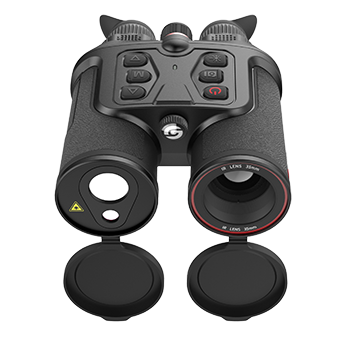
html
Thermal Binoculars: Enhancing Night Vision and Surveillance Capabilities
Thermal binoculars have revolutionized the way we see and interact with the world in low-light or complete darkness. These advanced optical devices utilize infrared technology to detect heat signatures, making them indispensable tools for military operations, wildlife observation, search and rescue missions, and security surveillance.
How Thermal Binoculars Work
Thermal binoculars operate by detecting the infrared radiation (heat) emitted by objects and converting it into a visible image. Unlike traditional night vision devices that amplify available light, thermal imaging works in total darkness and can penetrate through smoke, fog, and light foliage. The technology consists of:
- Infrared detectors that capture heat signatures
- Specialized lenses that focus infrared light
- Processing electronics that convert data into visible images
- Display systems that present the thermal image to the user
Key Advantages of Thermal Binoculars
Thermal binoculars offer several significant benefits over conventional optical devices:
Superior Night Vision Capabilities
These devices provide clear imaging regardless of lighting conditions, making them perfect for 24/7 operations where visibility is compromised.
Enhanced Detection Range
High-quality thermal binoculars can detect heat signatures at distances exceeding several kilometers, depending on the model and environmental conditions.
Improved Situational Awareness
The ability to see heat differences allows users to quickly identify potential threats or targets that would be invisible to the naked eye or conventional optics.
Applications Across Various Fields
The versatility of thermal binoculars has led to their adoption in numerous professional and recreational activities:
Military and Law Enforcement
Used for surveillance, target acquisition, and navigation during night operations. Their ability to detect hidden enemies or booby traps makes them invaluable for tactical units.
Search and Rescue
Emergency responders use thermal binoculars to locate missing persons in challenging environments, especially at night or in dense vegetation.
Wildlife Observation
Researchers and hunters utilize thermal imaging to study animal behavior without disturbing their natural activities or to track game in low-light conditions.
Industrial Inspections
Technicians employ thermal binoculars to identify overheating components, gas leaks, or insulation defects in equipment and structures.
Choosing the Right Thermal Binoculars
When selecting thermal binoculars, consider these critical factors:
- Resolution: Higher resolution provides clearer, more detailed images
- Detection Range: Match the range to your specific needs
- Refresh Rate: Higher rates (60Hz) offer smoother imaging for moving targets
- Durability: Look for waterproof and shock-resistant models for field use
- Battery Life: Consider operating time and replacement options
Keyword: thermal binocular
As technology advances, thermal binoculars continue to become more compact, affordable, and feature-rich, opening up new possibilities for both professional and civilian users. Whether for security, exploration, or research purposes, these remarkable devices extend human vision beyond natural limitations, providing critical advantages in low-visibility situations.